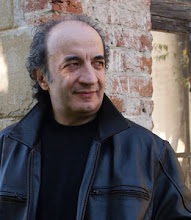 Joe Zawinul, pioneer, genius and master of Jazz-rock
Joe Zawinul, pioneer, genius and master of Jazz-rockDear Japanese friends,
,,, in a week we'll be in Tokyo for the 2 concerts at STB 139 on June 26th and 27th.
----Reservation
call STB 139 at 03-5474-0139
Service hour: Monday through Saturday 11:00 AM - 8:00 PM
E mail: herb@stb139.co.jp
In the meantime we go on with our quick but intense story of jazz-rock, and sharing these "roots" with you seems... the best intro for our 2 concerts in your country.
After the beginnings, jazz-rock spread its wings.
Since 1968 "rock-jazz/jazz-rock" started to "explode and expand" all over the world. This extraordinary meeting and blend of these 2 revolutionary styles of music both born in last century was spreading all over the world, creating many different exciting "musical scenes" with an extremely high degree of creativity.
Several groups (Soft Machine, Colosseum, Caravan, Nucleus, Chicago, Frank Zappa's band, Lifetime, Blood, Sweat and Tears, Brian Auger's Oblivion Express, to name just a few, and so on) had the same kind of idea at the same time (Perry Como would say ..it was a magic moment!)
Rockers became jazz-rockers focusing more on the impact of their dynamics, their energy, while jazzmen were becoming jazz-rockers focusing on sound, being smooth and elegant as well. At the beginning you could feel if the jazz-rockers came from jazz or rock but later the 2 intentions blended together more and more, and the new thing was so fresh and unpredictable that jazz-rock started to define the content of the style itself...by its own!
We can find obvious differences between what we define "progressive rock" and "jazz-rock" but one precise thing they had in common, and that's that they both had a "progressive attitude", I mean, simply, the intention to risk, the need of musical adventures in unexplored lands. creating what the...muse whispered, with a freedom from rules, styles, forms that had never been experienced before on this planet!
Once jazz music had been touched by rock music, it was merely natural that jazz musicians also adopted the instruments of rock music.
These things marked the first major revolution in jazz instrumentation since the early days of New Orleans jazz. In a few years jazz adopted the electric guitar, the bass guitar (replacing the double bass), the Hammond organ and all its successors (electric piano and synthesizers). Jazz-rock also adopted the rock way of using them. For example, the guitar and the keyboards now were treated as leading instruments, not part of the rhythm section. The rhythm section was pared down to bass and drums, and their work was almost unique in every band.
In the 1960s, basically, jazz musicians took two opposite views of where to go next: free musicians decided to turn the rhythm section mainly or essentially into a decorative element (percussion is a colouring device, not a time-keeping device), which almost inevitably led to the demise of melody, whereas Miles Davis and the other jazz-rock pioneers decided to anchor bebop/cool jazz to the most solid of all rhythms, the loud and steady rhythm of rock music a decision that almost inevitably led to the rise of melody.
In 1970, the trumpet player Miles Davis published a sumptuous double album called "Bitches Brew" which represents a turning point in the history of jazz music: It is the perfect synthesis between jazz and rock for long improvised pieces. The term "jazz rock" was born. The genre is characterized by an extreme decomposition of the tempo, providing more and more sophisticated, complex rhythms sections, a great tendency for virtuoso instrumentals, an approach for new technologies (with the launch of electronic instruments as the electric piano, synth), percussion materials and modulated, amplified sounds thanks to electronic effects. Among other artists who belong to this modern jazz tendency we can quote:
Among the main actors of jazz-rock were, the Miles Davis alumni, starting with Tony Williams, who was the first musician from a Miles' band, to have its own jazz-rock band, Tony Williams's Lifetime. Mile's alumni amplified, each one with his own path, Miles' Lesson: Hancock, Weather Reports, MAhavoshnu orchestra, Return To Forever...
What heaven! This revolution paralleled the revolution that we call free (or pseudo-free) jazz, goin' over numberless musical horizons.
The revolution had to do with rhythm, space, colours, freedom of … doing almost everything.
Under Rock-jazz idiom we found incredible rock band with brass like "Blood, Sweat & Tears" and "Chicago" (a similar line-up had "IF" in England), and in England we had English Jazz-Rock with Nucleus, Keith Tippet, Mike Westbrook Band, Mike Gibbs band, the Canterbury Scene with Soft machine, Caravan, Hatfield and The North, Egg, NAtional Health, and also Brand X, Isotope, and more. In Italy we had Area, arti & mestieri (although sometimes went into more progressive-rock lands) Perigeo, Napoli Centrale, Esagono, Agora', Baricentro, Libra, New trolls Atomic system with Tempi Dispari and more, and in Europe, Magma, Jasper van't hof, Wolfgang Dauner, Terje Ripdal, Ralph
Towner and many many more... we'll talk about ita kater (as IAn Carr would say..):: sorry for the ones I didn't mention in this first approach to this excellent list of jazz-rock heroes.
Jazz-rock music is typically instrumental, often with complex time signatures, metres, rhythmic patterns, and extended track lengths, featuring lengthy improvisations. Many prominent jazz-rock musicians are recognized as having a high level of virtuosity, combined with complex compositions and musical improvisation in metres rarely seen in other Western musical forms, perhaps best recognized in the work of jazz composers Dave Brubeck and Don Ellis.
The term “fusion”, later will refer, years later to a new dimension for blending together jazz, rock, world music, classical, or other influences into a concrete whole.
And next time we'll talk about TURIN JAZZ ROCK SCHOOL
Stay happy
Beppe


No comments:
Post a Comment